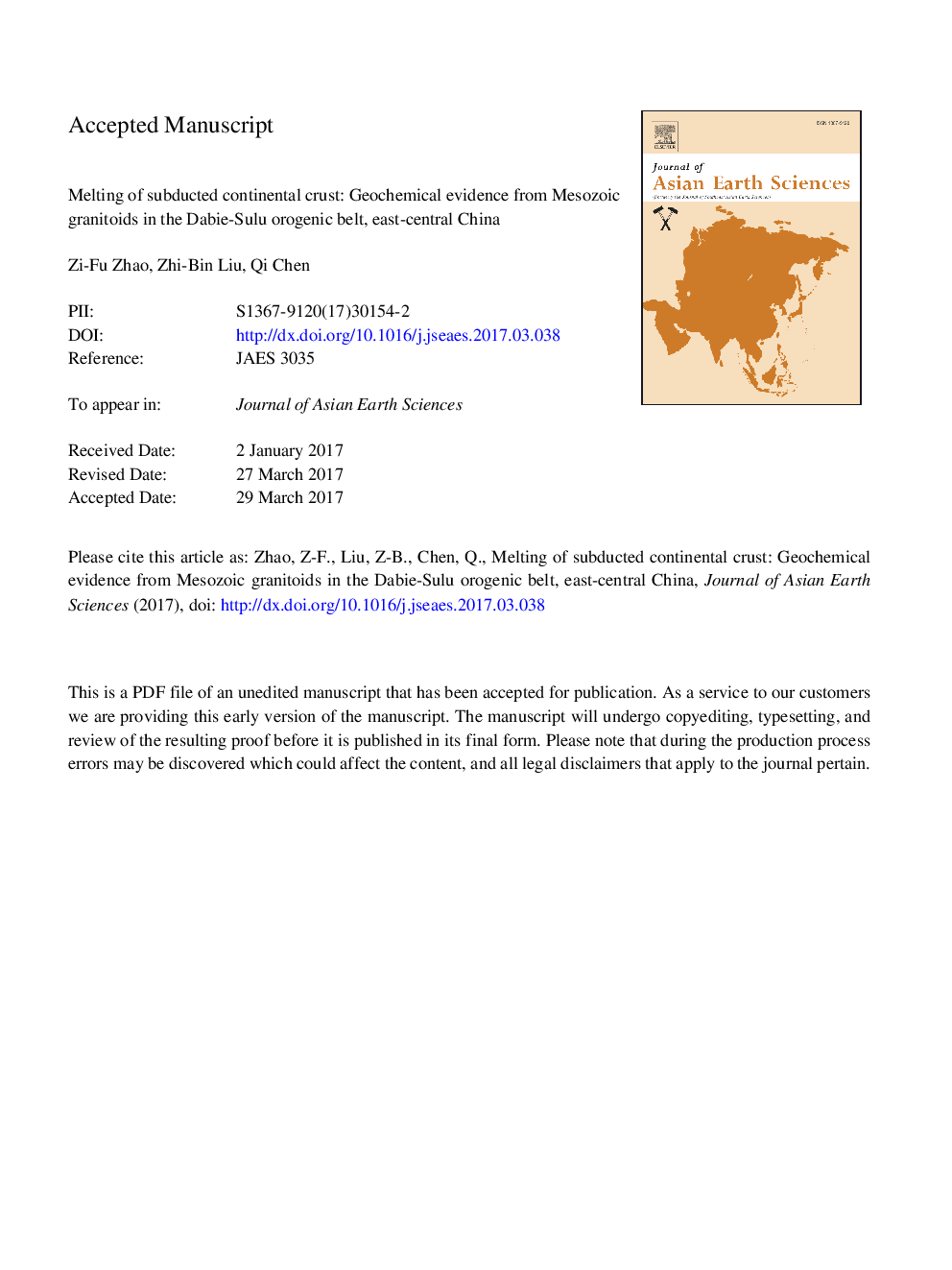| کد مقاله | کد نشریه | سال انتشار | مقاله انگلیسی | نسخه تمام متن |
|---|---|---|---|---|
| 5785961 | 1414092 | 2017 | 55 صفحه PDF | دانلود رایگان |
عنوان انگلیسی مقاله ISI
Melting of subducted continental crust: Geochemical evidence from Mesozoic granitoids in the Dabie-Sulu orogenic belt, east-central China
ترجمه فارسی عنوان
ذوب شدن پوسته قاره ای زیرزمینی: شواهد ژئوشیمیایی گرانیتویدهای مزوزوئیک در کمربند ارتوپدی داتی-سولو، شرق-مرکز چین
دانلود مقاله + سفارش ترجمه
دانلود مقاله ISI انگلیسی
رایگان برای ایرانیان
کلمات کلیدی
موضوعات مرتبط
مهندسی و علوم پایه
علوم زمین و سیارات
زمین شناسی
چکیده انگلیسی
Syn-collisional and postcollisional granitoids are common in collisional orogens, and they were primarily produced by partial melting of subducted continental crust. This is exemplified by Mesozoic granitoids from the Dabie-Sulu orogenic belt in east-central China. These granitoids were emplaced in small volumes in the Late Triassic (200-206 Ma) and the Late Jurassic (146-167 Ma) but massively in the Early Cretaceous (111-143 Ma). Nevertheless, all of them exhibit arc-like trace element distribution patterns and are enriched in Sr-Nd-Hf isotope compositions, indicating their origination from the ancient continental crust. They commonly contain relict zircons with Neoproterozoic and Triassic U-Pb ages, respectively, consistent with the protolith and metamorphic ages for ultrahigh-pressure (UHP) metaigneous rocks in the Dabie-Sulu orogenic belt. Some granitoids show low zircon δ18O values, and SIMS in-situ O isotope analysis reveals that the relict zircons with Neoproterozoic and Triassic U-Pb ages also commonly exhibit low δ18O values. Neoproterozoic U-Pb ages and low δ18O values are the two diagnostic features that distinguish the subducted South China Block from the obducted North China Block. Thus, the magma source of these Mesozoic granitoids has a genetic link to the subducted continental crust of the South China Block. On the other hand, these granitoids contain relict zircons with Paleoproterozoic and Archean U-Pb ages, which are present in both the South and North China Blocks. Taken together, the Mesozoic granitoids in the Dabie-Sulu orogenic belt and its hanging wall have their magma sources that are predominated by the continental crust of the South China Block with minor contributions from the continental crust of the North China Block. The Triassic continental collision between the South and North China Blocks brought the continental crust into the thickened orogen, where they underwent the three episodes of partial melting in the Late Triassic, Late Jurassic and Early Cretaceous, respectively, for granitic magmatism. While partial melting in the Late Triassic is responsible for syn-exhumation magmatism, the Late Jurassic and Early Cretaceous granitoids are independent of the continental collision and thus belong to postcollisional magmatism.
ناشر
Database: Elsevier - ScienceDirect (ساینس دایرکت)
Journal: Journal of Asian Earth Sciences - Volume 145, Part A, 1 September 2017, Pages 260-277
Journal: Journal of Asian Earth Sciences - Volume 145, Part A, 1 September 2017, Pages 260-277
نویسندگان
Zi-Fu Zhao, Zhi-Bin Liu, Qi Chen,
